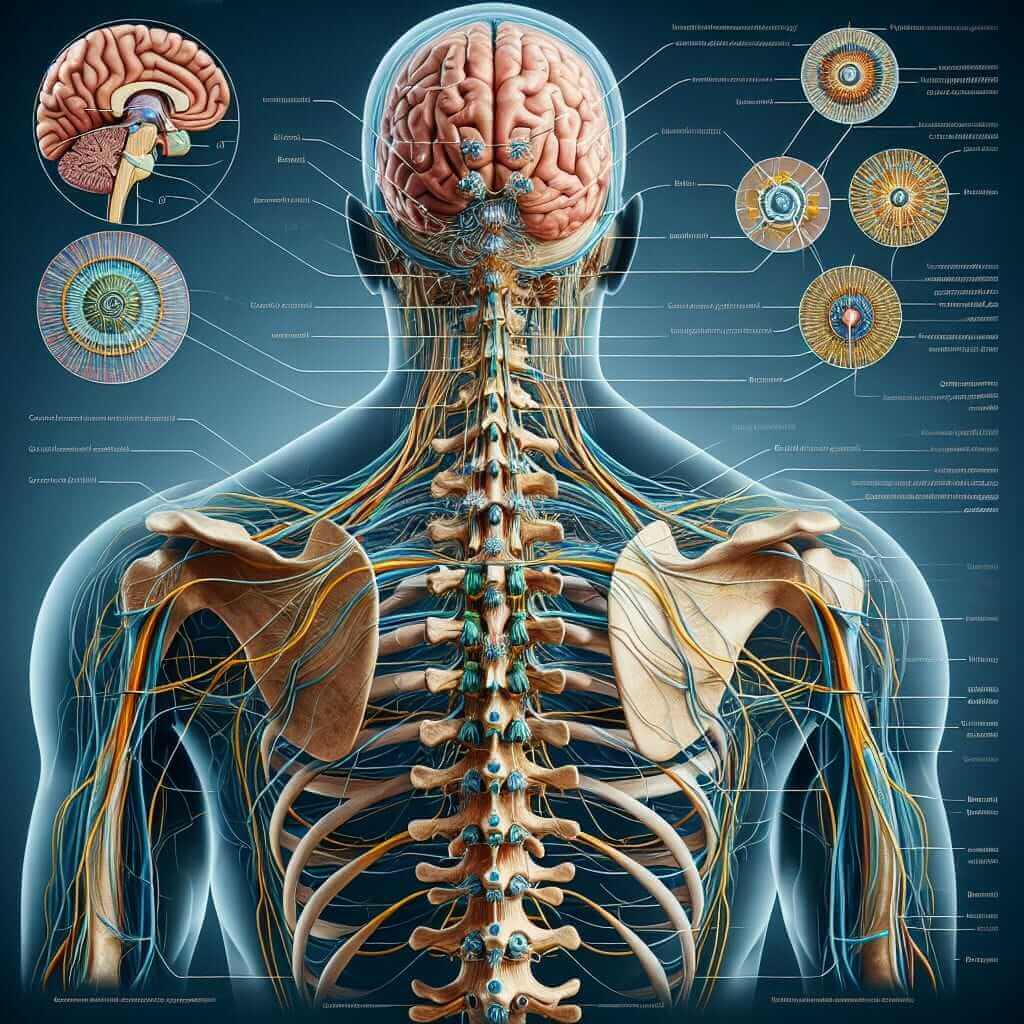The IELTS exam often features health and medical topics, requiring you to possess a wide-ranging vocabulary to excel. This article delves into the term “spinal cord,” a crucial anatomical term, to equip you with the necessary vocabulary and comprehension skills to confidently approach such topics in your IELTS exam. We’ll explore its definition, synonyms, and analyze its relevance across different sections of the IELTS exam.
Understanding “Spinal Cord”
Spinal cord (noun) /ˈspaɪnl kɔːrd/: The spinal cord is a long, fragile, tube-like structure that begins at the end of the brainstem and continues down almost to the bottom of the spine. It contains nerves that carry incoming and outgoing messages between the brain and the rest of the body.
 Spinal Cord Diagram
Spinal Cord Diagram
Synonyms and related terms:
- Vertebral column: This term refers to the bones (vertebrae) that surround and protect the spinal cord.
- Nerves: These are like electrical cables carrying signals throughout the body. The spinal cord is a major pathway for nerves.
- Central nervous system (CNS): The spinal cord, along with the brain, makes up the CNS, responsible for processing information and controlling bodily functions.
Example:
Damage to the spinal cord can result in paralysis, as it disrupts the transmission of signals between the brain and the muscles.
“Spinal Cord” in the IELTS Exam
You might encounter “spinal cord” and related terms in various sections of the IELTS exam:
Listening Section:
Listen carefully for mentions of the spinal cord in lectures or conversations about biology, health, or medical breakthroughs.
Example: A lecture discussing new treatments for spinal cord injuries might use this term frequently.
Reading Section:
Expect to find “spinal cord” in passages about the nervous system, anatomy, or medical case studies.
Example: A passage might describe the role of the spinal cord in reflex actions.
Writing Section:
While less likely to be a central theme in Task 2 essays, understanding “spinal cord” can be helpful for analyzing and responding to information in Task 1 (graphs, charts) related to health trends.
Example: A bar graph might show the prevalence of spinal cord injuries in different age groups.
Speaking Section:
During Part 3 of the Speaking test, you could discuss broader topics related to health, technology, and their impact on society, where the term “spinal cord” might be relevant.
Example: You might discuss the ethical implications of potential future technologies that could repair spinal cord injuries.
Using “Spinal Cord” in Context
Here are some examples of how “spinal cord” can be used naturally in sentences:
- The doctor explained that the injury to her spinal cord was severe but not completely irreversible.
- Researchers are making strides in developing new therapies for spinal cord repair.
- The central nervous system, which includes the brain and spinal cord, is a complex and fascinating area of study.
Collocations and Idioms
While there aren’t many idioms directly related to “spinal cord,” understanding how to use it with other words is key:
- Severe spinal cord injury
- Spinal cord compression
- Spinal cord stimulation (a treatment for chronic pain)
Conclusion
Expanding your medical vocabulary is essential for achieving a high IELTS score. By understanding and using words like “spinal cord” accurately and confidently, you demonstrate your language proficiency and ability to discuss complex topics effectively. Remember to practice using this vocabulary in context, and familiarize yourself with related terms to improve your comprehension and fluency.


